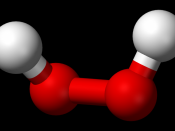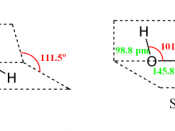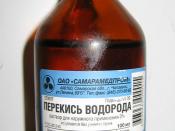Part one
1. a) When hydrogen peroxide was added to manganese, tiny bubbles formed in the solution- intensity of (1).
b)The solution did not change in temperature.
c) The bubbles stopped forming after about 18 minutes.
2. After we added 2 more mL of hydrogen peroxide, the reaction occurred again. Again, small bubbles formed; intensity of (1). The solution did not change in temperature. The reaction lasted about 15 minutes.
3. After adding more manganese dioxide, the reaction occurred again. This time, the bubbles being formed were larger; intensity of (4). The solution got a little warmer, but the difference in temperature was hardly distinguishable by simply touching the test tube. The reaction lasted about 10 minutes.
4. a) The hydrogen peroxide is used up and the manganese dioxide remains unchanged.
Part two
Title: Enzyme Function
Purpose: To observe the role of enzymes in chemical reactions and to determine the kinds of cells that contain more of the enzyme catalase.
Prior Knowledge:
Enzymes are proteins that assist the chemical reactions of a cell by lowering the amount of activation energy needed to start the reactions, thereby enabling the cell to carry out the reactions at a faster rate; enzymes that lower the activation energy are therefore called catalysts. Moreover, the enzyme itself is not destroyed in the process. Hydrogen peroxide is a substrate broken down into oxygen and water by the enzyme catalase. Sand and chalk are nonliving, so they do not have catalysts. Spinach and potatoes have enzymes to help speed up chemosynthesis and create a byproduct of hydrogen peroxide. Ground beef and cooked liver both have a high amount of enzymes because they are found in heterotrophic living organisms.
Hypothesis/predictions
We thought that the level of intensity and heat in the different test tubes would go...


